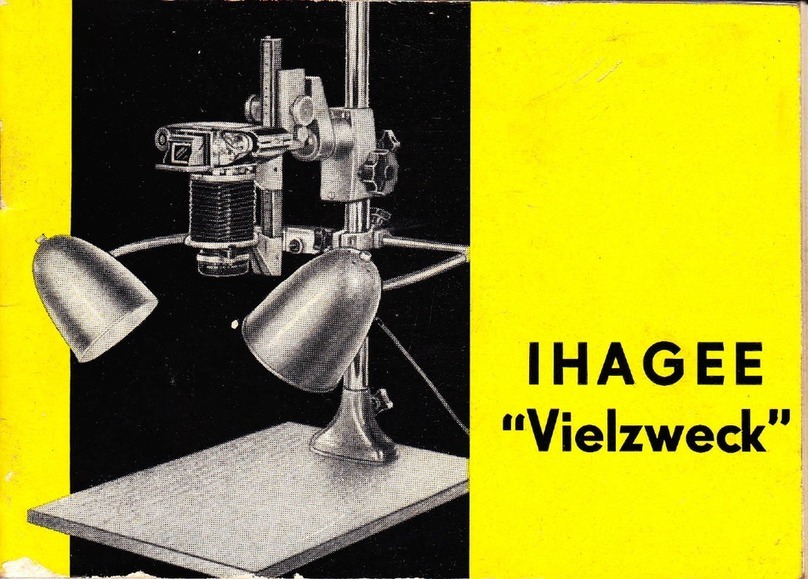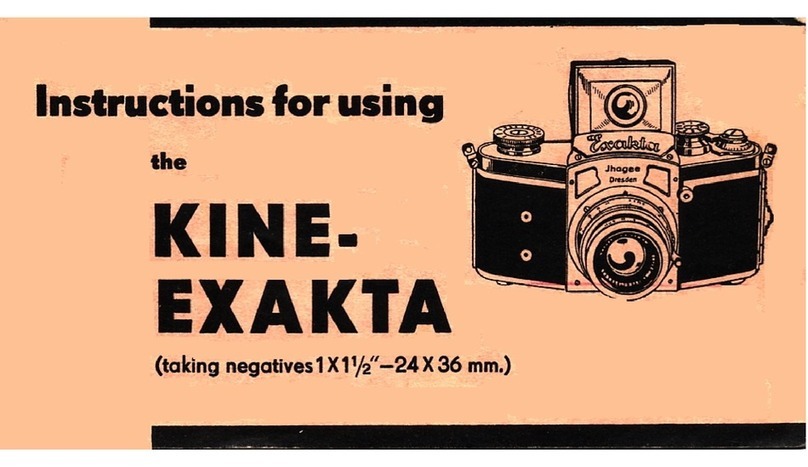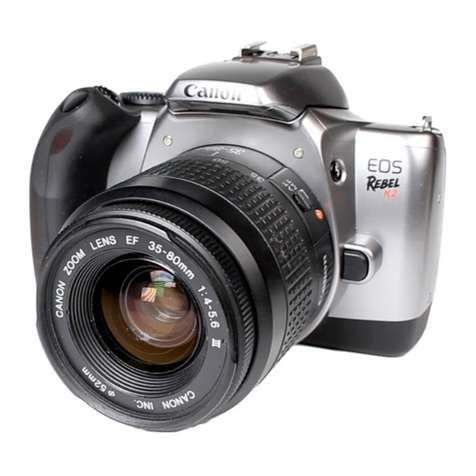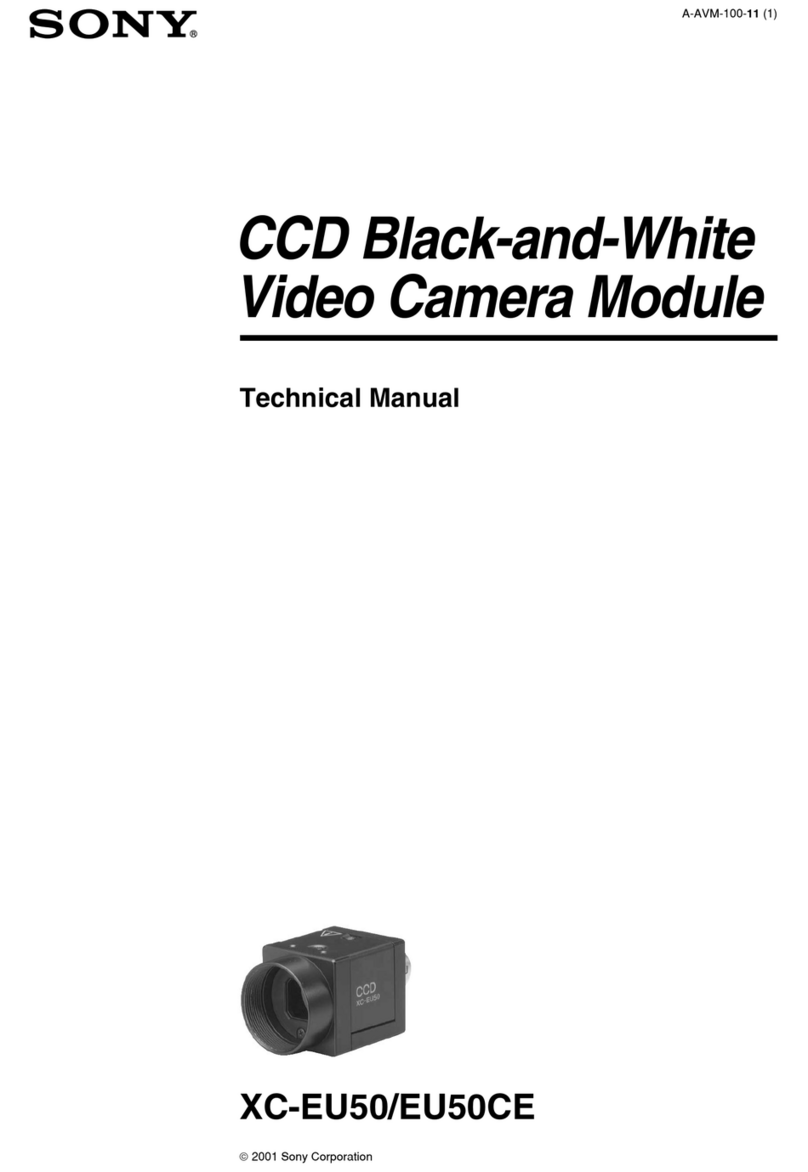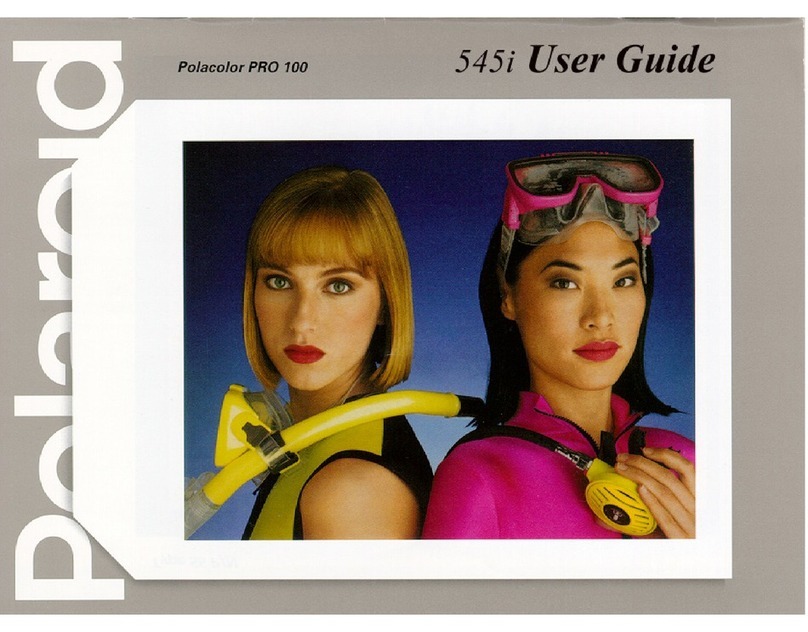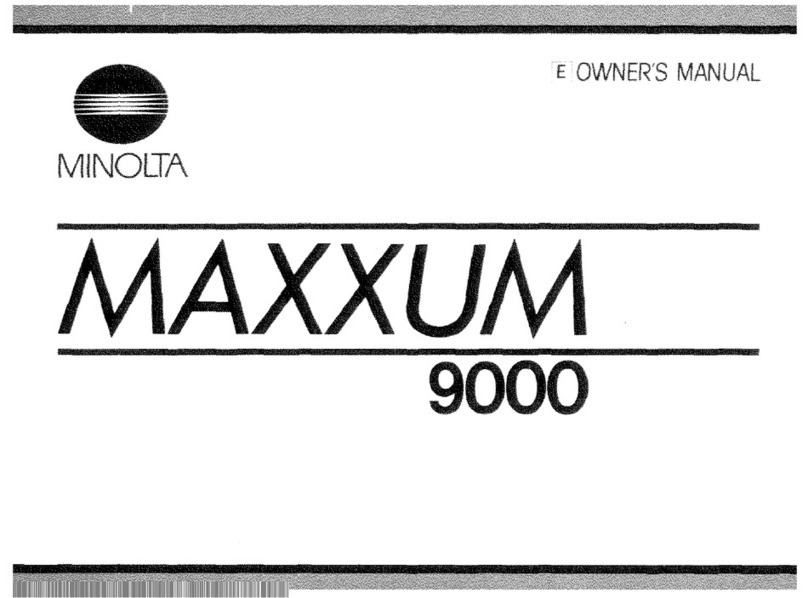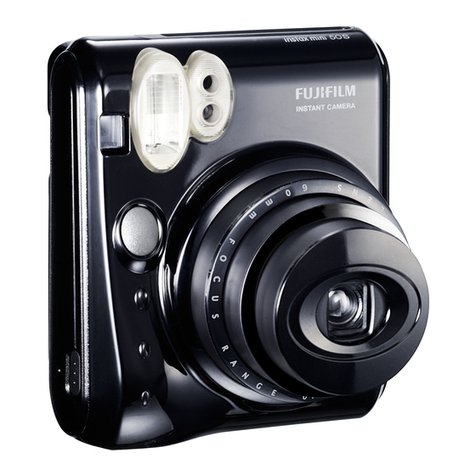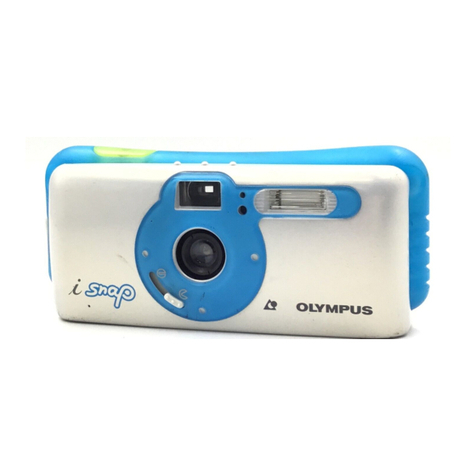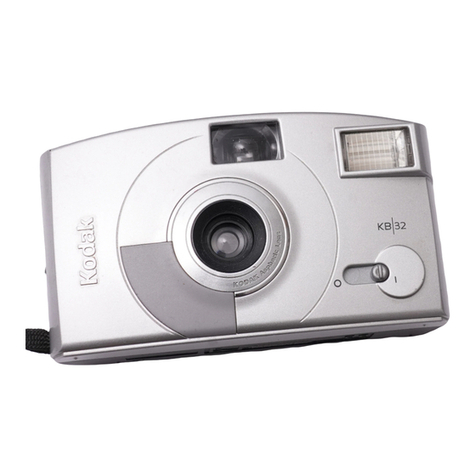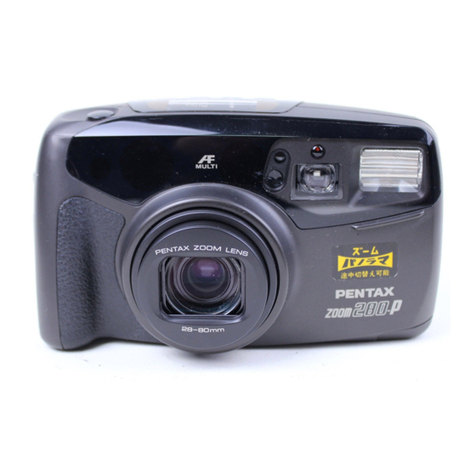Ihagee Vielzweck User manual

IHAG EE
"Vielzweck"

lhogee "Vielzweck"
The lhogee "Vietzwec.k" is bosed on the "Add
On" principle, whereby the user o{ EXAKTA
equipment con, occording to requirements ond
budget, groduolly increose the versoiility of this
equipment, utilising ihe mony interchongeoble
occessories ovoiloble in the EXAKTA ronge,
The "Vielzwed<" con olso be used wirh EXA
models lo und llb; there ore, however, o few
limitotions with ihe EXA lo.
The EXAKTA ronge of comeros, provided with
o few bosic occessories, hove proved very
successful in mony fields of opplicotion. The
oddition of ihe "Vielzweck", however, meets the
most exocting requiremenls of the odvonced
omoleur, professionol phologropher ond scien.
tific worker.
The object oI fhis booklet is io summorise the
moin opplicotions of the"Vielzweck". ln oddi-
tion, the equipment con olso be conveniently
orronged to occomplish mony other photo-
grophic losks.
IHAGEE KAMERAWERK AG
80I6 DRESDEN

fhe principol oPPlicotions of the
lhogee "Vielzweck" Pose
Tronsporencies """"' 13
M.dicol photoqrophy """"" 35
ihotori.iogtophv ..' """"" 27
MocrophorJgroPhy'...'''" 3'8'18
Copying """' 21
Theirifod in conneclion with long'focus
ond heovY lenses .. " " ' 33
itereo-PhotogroPhY .. 6
Producing duplicote negolives" " " " " l3
Component Portr Poge
The Swing Angle Attodrment ' ' ' '
The Bellows Attodrment
The Tronsporency Copying Equipment ' "
The Minioture Bellows Attodrment
The Copying Stond ond Repro Unit " " '
The Tripod Plot. ond Swing Angle Top ' '
The RB I Ring'Flosh Unit" '
Hints
Some hints concerning Mocrophotogrophy
ond PhotomicrogroPhY
The "Vielzwed<" ond EXA Models " " " '
3
8
l3
l8
21
33
35
39
42
Theremoybeslighrdevioiionsbelweentheoctuolmodelsondillustrotionsinthisbooklet.
Thebosicequipmentolthelhogee..Vielzwed<,,consislsofcopyingstond,bellowsofiodrment
ond tronsporency copying equipmenl, oll other ltems fi.sent.d'in tfiis booklel musi be ordered
seporotelY.

The Swing Angle Attochment
(Fiqs. 1 . ..3)
Fls. I
It consists of the swing ongle lop (10) ond the
focusing slide (l). The swing ongle top (10) is
prrh.J onto the slide roil (2) of the focus-
in9 slide: For this purpose loosen lhe locking
leier (1 l) by swinging ii to the left up to the
,Lp. iuti tire swing tngle top on lo the end
ot'the slide roil l2) lrecognizoble by the
iorge scole)' Sei the lod<ing screw (3) with the
cut--off po* of its heod on o level with ihe
slide roil (2). With the swing ongle.top
oushed on to the slide roil, slightly tighten
ih. lo&,inq screw (3), cousing the round port
of th. t.r"* heod to project o little obove the
slide roil, whidr will prevent the swing ongle
top from sliPPing off'
With the swing ongle top in use' ihe scoles on
the slide roii 121 become involid' You ore

oble io set the swing ongle lop ond lod< it in
ony desired position by simply lurning down
the locJ<ing lever (i l) to the right. As shown in
Figs. i ond 2 the comero is fostened lo the
ongulor piece (14) by meons of lhe fostening
screw (13). This fostening screw is designed for
comeros feoturing on English tripod sod<et
(1/4") or o Continentol tripod sockei (3/6").
Remember ihot the lod<ing-nut (12) hos to be
screwed in between the ongulor piece (14)
ond the heod of ihe fostening screw (13). As
soon os ihe fostening screw hos been driven
deep enough into the tripod sodcei of the cq'
mero.the lod<ing-nut must be screwed ogoinsl
the ongulor piece, To move the comero
from the horizontol to ihe verticol position, or
vice verso, the ongulor piece (14) is movoble
in both directions on pulling out the lod<ing
knob ('l5). This knob clicks in outomoticollv
when the ongulor piece ['14) hos completed o
900 rototion. For horizoniol working ihe swing
ongle ottodrmenl, on to whiclr the comero hos
ltq, z

been screwed, is simply sel upon o toble. The
swing ongle oitodrmenl will be very useful
when connected to o kipod eiiher in horizontol
position, orwith the oid of o tilting heod for o
tripod, it con be {ostened in o verticol position,
An English orContinentol tripod socket will be
{ound ot the bottom of rhe sliding blod( (8). The
extension required for the picture rotio is pro-
duced by inserting boyonet rings ond tubes. For
criticol focusing the swing ongle oitochment
offers two possibilities: Eilher you move the
swing ongle top (10) with the comero otfoched
on the slide roil (2) to ond fro (do not forget
io loosen locking lever (l 1) ond retighien it),
or you moke use of the ro& of the focusing
slide ond shift the slide roil with swing ongle
top ond comero mounted. Shifting ihe tripod
will be hordly necessory, {or the swing ongle
oilochment's wide focusing ollows omple ploy
{or vorying the subject distonce. Shorp focusing
is controlled on lhe reflex imoge of the comero.
Moving ihe slide roil (2) to ond fro is occom-
plished by octuoting lhe two ro*.ond.pinion
knobs (4 ond 5). When working with the oppo.
rolus in verticql position lhe ro&-ond pinion
knob (5) serves lor lod<ing the slide roil (2),
preventing its being pulled down by the weight
of the comero. The rod-ond.pinion knob l5)
is.screwed clod<wise tight ogoinst the sliding
blod< (8) during whidr performonce the oppo.
siie knob (4) musr be held tight. lf the rock-
ond-pinion knob (5) is to oct once more os o
focusing knob, it must be lurned owoy fr:om the
sliding blod< (8) ond fixed in its endposition
during whidr performonce the knob (4) must
ogoin be held tight. Lod<in9 screw (6) prevents
the swing ongle top from slipping off the slide
roil (2) while working wiih the opporotus in
verticol position. (Hole (7) ond lod<ing knob {9)
serve fo receive the tronsporency copying
equipment; pleose see olso poge l3).
li is recommended lo use lhe outocouple exten.
sion releose (Figs,1 ond 2) when using boyonel
rings ond tubes in connection with the {ully
outomolic spring or pressure diophrogm me-
chonism of lhe lenses.

t:ftiiittli Stereo Photosrophv with Swins Ansle
rE:;i,iinii Aitochment
1r+
1ts
ln stereo (3 dimensionol) phoiogrophy you
ore not obsolutely bound lo moke both expo'
sures simultoneously using two lenses or (os in
the cose of the Stereo Attochments of our co"
meros) two prisms' The lwo stereoscopic pictures
con be loken in succession. The comero, in ihis
cose, hos two difierent stondpoints ond the
distonce between these two points is colled
the "slereoscopic bose": the object must, of
course, be moiionless. The stereoscopic effect
is considerobly enhonced by "wide bose" ex'
posures, in whidr the distonce between the two
pictures is not the usuol 6.5 cm - interoculor
dislonce -, but where o greoter loterol move'
ment of the comero is possible' The swing ongle
ottochment connected to o sturdylripod, permils
moking stereo exposures wiih o bose of olmosl
50 cm. The focusing slide (l) is fixed to ihe
tripod ot.o right ongle to lhe viewing line
Fls, 3

(Fig.3). While pulling knob (15|, rurn rhe ongu.
lor piece (14) upwords, bringing the plote with
the hole for the fostening screw to the top,
reody lo occepi ihe comers ot o right ongle
to the focusing slide for horizontol exposures.
The comero is foslened by meons of fostening
screw (13) ond the lo&ing nut (12) is ogoin
screwed in between the heod of the fostening
screw ond the ongulor piece (.l4). The stereo
bose is obioined either by the swing ongle top
(10) on the slide roil (2) or by odJitionol
odjustmenl of the slide roil (2) itseif, by meons
of the rod-ond.pinion medronism of the focus-
ing slide.
Nos. for ordering
Focusing slide (1) lSS.Ol U7
Swing ongle top (10) l5S.O3
Swing ongle qtiodrmenr (l + lO) lS5.O8
Pleose stote whelher lhe comero hos on'Eng-
lishor Continentol tripod sodet.

Bellows Attochment
(Figs. 4 ond 5)
ll consists of the bellows iop ottochment (20)
ond lhe {ocusing slide (l}. The locking levers
(24 ond 25) locoted on comero holder ond lens
holder respectively must be loosened byturning
lhem counterclockwise up to the stop. Comero
holder ond lens holder hove to be pushed
ioEether so thoi the bellows ore protecled.
Firsi the lens holder (22) ond then the comero
holder of the bellows top ottochment (20) ore
pushed on io the toil-end of the slide (recog-
nizoble by the lorgest volues on ihe scole).
Fls, 1

reody{or verticol exposures, lf you inlend work.
ing in horizontol position, lurn the comero
bo& ogoin by 900 up lo ihe stop. You ore ol
liberty io use ony stondord or speciol supple^
mentory lens to fit our single lens reflex come"
ros, wilh the exception of extreme wide-ongle
lenses with o focol length of less thon 30 mm.
Also lenses feoiuring very long focol distonces
ore not very procticoble on the bellows ottodr'
ment. When fixing the lens into the lens holder
(22) the red doh on lhe boyonet fittings must
meet. lnserl the lens into lhe boyonet mount
ond turn clockwise until lo&ing lever (26)
clicks in.
The smollest increose in extension obtoinoble
wilh the oid of the bellows ottodrment is
35 mm, the greotest opproximotely 220 mm.
The 35 mm extension increose. when using
50 mm slondord lenses, shows on imoge scole
of reproduction of 0.7 ond subjecls meosuring
34 mm x 5l mm ore reproduced in full. The
wellknown speciol lens ieno T I2.8/50 mm is
ovoiloble with sunk mount, for loking lorger

.1.1" ]:1':n screw (3f musi be ser in sudr c
woy thot the cut-off section of ,i. ,.,.*"il.l
ifl ,',T'l'r#[ii:*fft][1T:';:'l-.,i,i;:
]lfiy h".d ro projecilf,. srrfoc. of rhe slide
rotl, thus prevenlinq on c
"+ *,u o"i ro*"J il,Jffi."f "li I j,jjJ,lff]
to ploce the bellows lor
*o,a, tn. oppo.il'il,"iHJm.i ii,li [;
ond to lod< the lensholder in this position bv
turnins tever(24) to rhe ristr. tr ;iir ilil;#
l: ,?.r: rhe comero hotder 122)r; ;;I;;;"";
the slide roil (2), os reouiyEd f", f"*rrr. fi.
com.ero.holder con be locked in posilion bv
turnins.tever (25)ro the .igf,,. Oi i;;,',ri.I
lens holder l22l con olso be ,or"d.--'-", ,"=
#Ii: EilTrfl tf. ;Til ito T:,,.".r ;;t
two boyonet rings ore .ro.rfy opporitJ'.oi
other..Then turn rhe .o..ro .ri*riii.ii, ,it"*]
tng direcrion) unril rhe f.*i"g l.r.; .ii-*,
rnto rhe boyoner fiting. The .;";;'j, ";;

subjects with the oid of rhe bellows ottodrment.
It will olso ollow locusing oi longer dtstonces
(up io infinity). The blod< figures on the scole
of the focusing slide (l) signify lhe increose in
extension in mm for the usuol stondord, short'
or long-focus lenses of our comeros, whereos
ihe red figures refer to the increose in extension
when using the speciol lens Jeno T f 2.8/50 mm
with sunk mount. This lens con, therefore, coPe
with exlension increoses ronging from 0 up to
'185 mm. The scole volues hold good only with
lens holder (22) in position ogoinsl the front
stop of the ilide roil (2). lt is the meosurement
visible ogoinst the upright reor surfoce of the
comero holder thot counts,
lf the bellows iop oltodrment (20) is io be
removed Irom the focusing slide (1), it is in oll
cosbs odvisoble, for the soke of preserving the
bellows ofter loosening the levers 124 ond25l,
to push lens holder (22) ond cqmero holder
(21) together, ond lhen lo drow them together
Irom the slide roil (2). lt will be necessory to
set the lod<ing screw (3) so thoi its loterol cut'
off seclion lies on o level with the upper sur-
{oce of the slide roil (2).
For horizontol working. the bellows ottodrmeni
fostened to the comero con beset on o toble.
The bellows oltodrment con be fixed on o
slurdy kipod either in horizontol position or,
with the oid of o pon ond tilt tripod heod, in
o veriicol position. An English ond o Continen-
tol iripod sod<et will be found ot the bottom
of the sliding blod< (8). Moreover, lhe bellows
otlodrment is one of the essentiol componenl
ports oI the repro unit (see poge 21).
The necessory increose in extension is obioined
by drowing out the bellouas: Loosen lever (25)
locoted on the comero holder (21) ond slide
the comero holder up to the desired scole
volue. Crilicol focusing is occomplished by
ocluoting the cog-wheel mechonism of the
focusing slide ond by moving lo ond fro the
slide rqil (2) with lhe bellows iop ottodrment
ond comero mounted. Shifting the hipod will
hordly be necessory, {or ihe bellows ottodr-
t0

ment's wide focusing ronge ollows omple ploy
{or vorying the lens to subject distonce. How.
ever, in cose the lens to subject distonce is un-
chongeoble, criticol focusing con be occomplis-
hed by moving the comero holder (21) to ond
{ro on lhe slide roil (2). O{ course, shorp fo-
cusing is controlled on the reflex imoge of the
comero. Moving the slide roil (2) to ond fro
is occomplished by ociuoiing the rod<.ond-
pinion knobs (4 ond 5). When working in ver"
ticol position the rock-ond.pinion knob (5)
con serve for fixing the slide roil (2), thus
preventing it from being pulled down by the
weight of the comero. ln this cose the rqd<-
ond-pinion knob (5) is screwed clockwise iight
ogoinst lhe sliding block (8), whilst the opposed
knob (4) is held iight. lf the rock.ond.pinion
knob (5) is wonted ogoin for focusing, turn it
owoy from the sliding blod< (8) ond tighren it
in ils end position. Rock.ond.pinion knob (1)
.;:*3
:t:{ffi
1t
Fig. 5

must be held right. lod<ing screw (6) prevents
the bellows top ottodrmenl from slipping of{ the
slide roil (2), while working with the opporotus
in verticol position, (The hole (7) ond the locking
knob (9) serve lo receive the tronsporency
copying equipment, pleose see olso poge l3')
Nos. for ordering
Focusing slide (I)
Bellows top ottodrment (20)
Bellows ollodlment (l +20)
Speciol lens Jeno T f 2.8/50 mm
wilh sunk mount
l ss.ol u 7
155.02
1s5.1 0
128
12

TheTro nsporency Copying Equipment
(Figs.6 ond 7)
The desire to moke lronsporencies {rom 35 mm
blod<-ond.white ond colour negotives, ond
35 mm duplicote negoiives {rom reversible
tronsporencies, led to the designing of the
tronsporency copying equipment. Copying is on
opticol performonce bosed on close-qp photo'
grophy, necessiioting the use of the bellows
oitodrment. For exposures ot o rotio of 1:l
the extension increose must be equol lo the
focol length of ihe lens in use. The scole ol the
bellows oltochment hos to be set to on exten'
sion increose equol io the focol length of the
I ens.
Fis.6
13

The tronsporency copying equipment (30) hos to
be fixed to the focusing slide (l) by meons oI
the coupling rod (31), Tighten the little knob
(9), (see Fig.4), ond the lronsporency copying
equipment isfostened securelyto lhe focusing
slide. The ironsporency copying equipment
(with bellows ottochment) is generolly drosen
Ior 35 mm objects in the horizontol position in
connection with the repro unit (see Fig. 7). You
will find it most convenient to do this kind of
work sitting down ond looking stroighi into
lhe Pento Prism or into lhe built-in Prism View.
finder of ihe comerq. (Of course. the Finder
Hood. loo. con be used for focusing with the
EXAKTA Vorex).
Before use,ihe lronsporency copying equipment
(30) hos to be odjusted so thot the operture
of the picture gote (35) will olwoys fit precisely
into the film window of the comero in lhe
horizontol position. After lhe tronsporency copy-
ing equipment (30) hos been fixed to the focus.
ing slide (l), you ploce ony negoiive strip into
the folding picture gote (35), moking sure thot
one of ihe negoiives lies exoctly in the oper-
ture of the piclure gote. You illuminote your
object either with normol bulbs (preferobly
nol less thon 60 woits), or with photolomps.
Depending on ihe omount of heot rodioiing
from the lighl source, lhe lomp is ploced obout
30 cm to 50 cm behind the picture gote (35),
the opol gloss of whi6 yields on even dislri-
bution of light. Open the bod< of the comero,
which hos been fixed os shown in Fig. 7, ploce
the little ground gloss on the film window of
lhe comero ond with your comero prepored -
os described before -Ior o reproduclion rotio
o{ l:I. you focus, by meons of the rock ond
pinion knobs (4 ond 5), on lhe imoge visible
in lhe ground gloss. Set the shulter to T ond
open ii. Loosen the nur (39) with the oid of
o screw driver. The holder (38) con now either
be turned oround the oxis of the coupling
rod (31) or moved slightly in o horizontol
direciion until the imoge in the ground gloss
comes lo lie exoctly between lhe shoil morgins
of the film window in lhe comero. The nut
(39) con now be screwed tight. os it will not
11

be loosened ogoin Focusing in verlicol po.
sition is performed by rise or loll move.
menl of the piciure gofe (35) on the holder
(38), for whidr purpose the lever (36) hos ro
be loosened, Hoving been thus odjusted, the
imoge in the ground gloss must lie precisely
between the long edges of the Iilm window in
the cqmero. After finol odjustment, lhe lever
(36) must be tightened ogoin. To mork the
correct odjusiment we odvise moking o pencil
siroke on the holder (38) or the point desig-
noted by lhe orrow (37) in Figs. 5 ond 7. This
odjuslment olwoys hos to be observed when
moking dupl icote negotives ond tronsporencies
on o reproduction scole of I : 1. The object
needs only lo be ploced occurotely into the
piclure gote (35) ond upon {ocusing either in
lhe Finder Hood, in lhe Pento Prism or in
lhe Prism Viewfinder of ihe comero with the
oid of the rod<.ond-pinion knobs {4 ond 5)
you hove exoctly the 1 :1 imoge. After this
odjustment it is no longer necessqry to wotch
t5
Fls.7

ihe reflex imoge os long os your exposures
ore being mode on the I : I rolio. lt is odvis-
oble to stop down lhe diophrogm to f 8.
To ovoid penetrotion of oulside light, o lrons.
porency copying screen (32) hos to be fixed
ot lhe projections (31) on th€ picture gote. To
ovoid outside light especiolly {rom the picture
gote, it is profitol.rle io work with the trons-
porency copying equipment in o slightly dorke.
ned room.
As olreody menlioned, the single negotives,
or negotive strips, ore inserted inlo the opened
picture gote (35). Film troys (33) on both sides
hold the ends of the skips. lt is odvisoble to
use the folded poper mosks to push in the
negotive strips. The mosk projects from lhe
sides of the picture gote ond con be moved
sidewoys in both directions for criticol odjust-
ment of the picture outline in the l:1 rotio
ond olso when reproducing smoller singled'
out ports of films. (See next seciion.) To moke
negotive copies of 5 cm x 5 cm reody mounted
tronsporencies, the lolier ore inserted inlo the
frome behind the projections (34).
Exposure lokes ploce by meons oI lhe comero
shulter.
As o rule, lhe scole of reproduction will be
l : L It is olso possible, however, to seleci
smoller poris ol o negoiive for the copy. This,
of coursq requires o somewhot longer comero
extension, ottoinoble, e. g. in lhe distonce
between comero holder ond lens holder (21
ond 221 in the bellows oltodrment, The nego-
five is loterolly odjustoble in lhe picture gote
(35), ond the whole picture gote itself is or-
ronged lor verticol odjustment. The lotter is
odrieved os before mentioned by loosening
the lever (36) ond moving the picture gote
slightly up or down. The piciure gote is foste-
ned in position by turning down lhe lever,
Focusing is occomplished opticolly. bosed on
the reflex imoge of lhe comero, ond medro'
nicolly by ocluoting ihe rod<-ond-pinion me-
chonism of the focusing slide (l).
16

For ihe opticol production of 35 mm tronspo-
rencies from lorger nogolives, il is best to
work wilh the opporotus in the verticol posilion,
using the repro unit or the copying slond ond
some kind of lightbox. (See olso note on
poge 241.
Nor. for orderlng
Tronsporency copying equipmenl
(30) with ground.gloss screen ond
2 poper mosks for single negolives
(for use with bellows oltodrmenl
only) 155.04
I
17

I
The Minioture Bellows Attochment
(Fig, 8)
The minioture bellows offodrment, (40) whi6 is
eosily corried, is porliculorly iniended for ioking
close-ups by hond, bui, of course. ii con olso
be employed on o tripod or on our copying
stond. lt is possible lo fosten the comero lo
lhe comero holder (41) either in verlicol or
horizontol position. ln cose oI horizoniol posi'
tioning moke sure thot the red dot ot the
comero is exoctlyopposiie the single red dot,
ond in cose o{ verticol posilioning it must be
opposite the double red dots ot the comero
holder (41). Seen in viewing direction, swing
he comero to the right until the lod<ing lever
ot the comero boyonet clid<s in' To secure lhe
lens on the lens holder (42): Moke sure thot
the red dots ore opposite eoch olher, give ihe
lens o short turn to the right until the lod<ing
tever (44) ot lhe lens holder clid<s in.
lLoosen the locking knob (43) ot the lens holder
(42) ond set ihe desired exlension increose,
between 35 mm ond I25 mm: push ihe lens
holder (42) forword ond secure it by meons of
lod<ing knob (13). The groduoiion lines on the
Fis.8
18
Other manuals for Vielzweck
1
Other Ihagee Film Camera manuals
